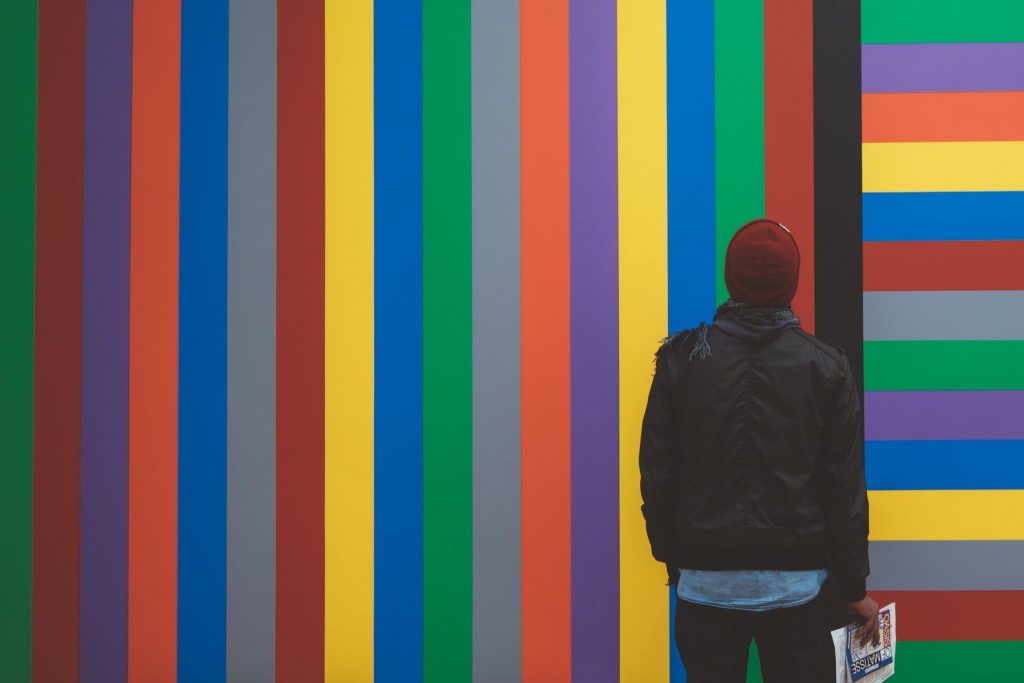
Colors affect everyone’s emotions consciously or unconsciously. This influence is more powerful than we think.
Our vision allows us to perceive countless images and objects. Obviously, this is why we see colors. Undoubtedly, colors affect emotions and our daily lives.
In addition, each of us reacts in a certain way to colors. The influence of colors can affect emotions or preferences regarding:
- food;
- images;
- advertising.
Color psychology is a field of study specifically devoted to the analysis of how colors affect us.
The colors that most people can distinguish are available in the rainbow. Here they are:
- red;
- orange;
- yellow;
- green;
- blue;
- indigo;
- violet.
Learn how colors affect emotions and decisions
1. Red
The first color is red. It is the brightest. It evokes feelings such as:
- love;
- passion;
- warm;
- viability;
- comfort.
On the other hand, it can also represent negative feelings:
- anger;
- rage;
- lack of control;
- violence.
In addition, it is used to indicate danger. It is also associated with violent situations. Thus, red is a good example of how colors affect our behavior.
Moreover, red affects our bodies, in particular:
- increase in heart rate;
- increased appetite;
- a feeling of warmth.
Red is intensely alive. For this reason, it is remembered and attracts people’s attention.
2. Orange
The next color is orange. This warm color is not as bright as red.
This color represents:
- courage;
- desire;
- adventures;
- imagination;
- positive incentives.
In addition, orange can make us feel hungry and thirsty. Therefore, it is suitable for restaurants and food areas.
Indoors, it can cause insomnia. This is due to its intensity.
3. Yellow
This tone attracts people’s attention. This is the result of its warm and pleasant light.
It’s meaning:
- immortality;
- arrogance;
- power;
- domination;
- wealth.
In everyday life, it is used for warning signs. It is a color that describes light. Moreover, it is associated with intelligence.
In small volumes and in a light tone, it is quite pleasant. However, if used in large rooms and with intense tones, it can irritate and tire the eyes. It speeds up metabolism. Such colors affect emotions, causing frustration or anger if they are present in a small room. However, this happens in cases of intense shades.
4. Green
Next – green. This is the color of nature. It evokes images of the countryside and forests.
It symbolizes:
- spring;
- fertility;
- renewal;
- growth.
In a positive sense, this means:
- good luck;
- health;
- hope;
- logic.
Green is a combination of blue and yellow. Thus, he is halfway between emotions and judgments.
After stressful moments it causes:
- freshness;
- relief;
- rest;
- comfort;
- relaxation;
- vacation.
In addition, he is associated with sociable, kind, and patient people who hate loneliness and therefore seek company.
5. Blue
Another color of the rainbow is blue. Blue resembles the image of the sky. It is also strongly connected to the sea. On the other hand, it concerns many abstract concepts.
These include the following:
- trust;
- mind;
- peace;
- nobility;
- security;
- truth;
- wisdom;
- immortality;
- reliability.
Blue is a cold color. Therefore, it is also associated with both ice and iron, depending on the intensity of the shadow.
In addition, it symbolizes rest and tranquility. It does not tire our eyes, so it can be used in large spaces.
Blue relaxes. In other words, it is calm. In addition, it can lower body temperature and even heart rate. On the downside, it can create feelings of sadness.
6. Indigo
This color follows blue. Indigo stimulates the imagination and intuition, deepens our emotions and thoughts, that is, it has a strong influence on our consciousness. Therefore, it can be dangerous for depressed people. It also has a sedative effect.
On the other hand, it symbolizes beauty, mystery, and wisdom. In addition, in Asian countries such as India and China, people often use it. It can often be found in the paper and textile industries.
7. Violet
Violet comes last, but it is not mean the least important. It symbolizes humility and patience.
Moreover, it is related to reflexive people, as well as the following concepts:
- solitude;
- pain;
- a victim;
- mysticism.
This color, consisting of red and blue, has conflicting meanings. It promotes relaxation, spiritual strength, and sensitivity in people with irritable temperament. When it comes to more intense shades of purple, these colors affect emotions and are associated with egocentric and materialistic people.
Picture Credit: Unsplash



